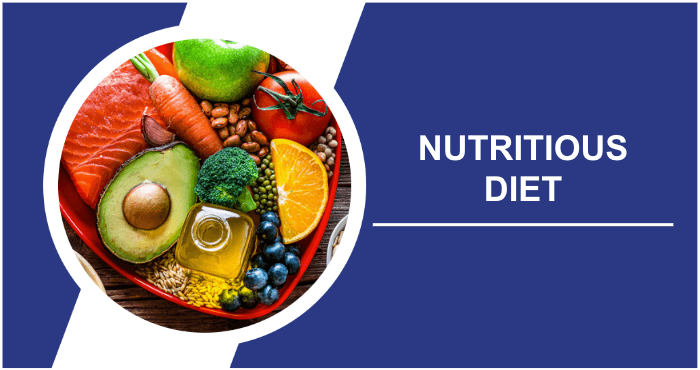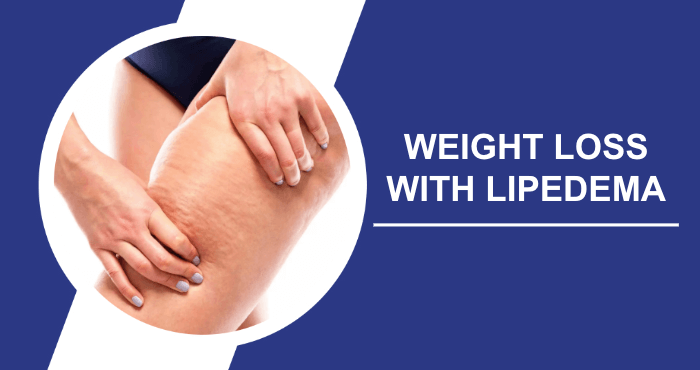Trying to lose weight can often feel like a daunting task. Amidst a plethora of miracle diets and fitness regimes, it can sometimes seem that shedding those extra kilos is out of reach. For many women, weight loss is a significant hurdle due to a number of factors. Unbeknownst to many women, a condition known as lipedema can make the process of losing fat much more difficult.
Strategies For Losing Weight With Lipedema
In fact, standard diets and exercise routines may not be enough to lose weight if you have lipedema. The primary approach is to maintain a healthy lifestyle and manage the condition:
- Exercising consistently
- Eating nutritious foods
- Adhering to a regimen of therapeutic measures, such as compression therapy
- Developing a support network
What Is Lipedema?
Lipedema is a chronic condition characterised by the abnormal accumulation of fat, especially in the legs and arms. It usually affects women and is often mistaken for obesity or lymphoedema. Unlike normal fat, lipedema fat is not significantly reduced by diet or exercise. The condition can be painful and lead to mobility problems and emotional distress.
How To Lose Weight With Lipedema
The causes of lipedema are still unclear. It seems to be genetically linked. The condition is characterised by excess fat deposits along the entire length of the legs, especially around the hips. The arms can also be enlarged, with the exception of the hands and feet. These areas can be tender, prone to swelling and often bruise easily. There’s currently no natural way to lose the fat associated with lipedema. Surgery may be needed in certain situations.
Treatment for lipedema usually focuses on three key aspects
- Promoting self-management
- Symptom relief
- Improving overall wellbeing
Often referred to as a conservative strategy, these measures aim to minimise swelling and discomfort, maintain and improve mobility, and reduce overall body fat. Surgical intervention is usually considered only after this conservative approach has been followed for some time.
Some Key Aspects Of Lipoedema Management
1. Exercise And Movement
Lipedema’s fat build-up appears resistant to typical exercise and diet regimes, yet exercising remains beneficial. It plays a crucial role in maintaining overall health, and specifically aids in managing lipedema in multiple aspects. As previously noted, much of the discomfort and swelling associated with lipedema stems from inadequate lymphatic circulation. Engaging in physical activity is an effective method to enhance this circulation, aiding in the reduction of swelling and persistent inflammation.
Regular exercise also aids in preventing mobility deterioration, a frequent issue in lipedema cases. The combination of swelling and fat accumulation can hinder or exacerbate movement. Generally, light to moderate exercise is advised. Activities like swimming or water-based exercises are often suggested due to their positive impact on lymph circulation and other benefits. Incorporating stretching exercises such as yoga or pilates proves useful. Even moderate walking contributes positively.
2. A Nutritious Diet

A nutritious diet is an important part of lipedema management for several reasons. Firstly, women with lipedema often struggle with obesity. Each of these conditions can make it difficult to maintain mobility. These challenges are compounded when both obesity and lipedema are present.
An anti-inflammatory diet is often recommended. This is thought to reduce the swelling and discomfort associated with lipedema. Much of this benefit comes from improved circulation in the lymphatic system. Poor circulation can trigger an immune response that leads to swelling and pain. An anti-inflammatory diet can help reduce this immune response. Supplements may also play a role in reducing inflammation.
Of course, a healthy diet with real food contributes to overall wellbeing. This is crucial when dealing with persistent pain or chronic conditions.
3. Treatment Approaches
The strategy for treating lipedema is known as comprehensive or thorough decongestive therapy (CDT). In addition to diet and exercise, several approaches help improve lymphatic flow and minimise oedema, and there are medications that help with multiple aspects, such as pain relief.
Methods included in CDT include
- Manual lymphatic drainage massage
- Skin care routines
- Compression devices
- Constrictive clothing
Constrictive clothing consists of tights, hose or pantyhose that exert a certain amount of pressure on the limbs. This promotes blood and lymph circulation. Manual lymphatic drainage massages use massage techniques to remove excess fluid from congested tissues. Pneumatic compression devices are a more powerful variation of this principle.
4. Lipectomy
Lipectomy is the surgical removal of fat from the body. There are several techniques, but water-assisted liposuction has gained popularity. Many people are familiar with the concept of liposuction. Water-assisted liposuction uses a water jet to help remove fat. This method is considered less invasive and poses less risk to the lymphatic system.
Liposuction has been shown to be effective in slowing or stopping the progression of lipedema in certain cases. After surgery, it’s still necessary to continue with compression garments, exercise and other aspects of the treatment plan.
5. Support System
Mental health care is an important part of lipedema management. It’s common for lipedema to cause feelings of anxiety, depression and negative self-perception. This is often exacerbated by widespread ignorance about lipedema in the general population. Establishing or finding a support network is crucial to managing lipedema. There are many lipedema support groups and resources such as lipedema.org and lipedemaproject.org where people can find information and a supportive community.
How Long Does It Take To Lose Weight With Lipedema?
Losing weight with lipedema can be challenging because the condition affects fat distribution and metabolism. The time it takes to lose weight varies greatly from person to person, depending on factors such as the stage of lipedema, general health, diet, exercise regime and adherence to treatment plans.
Although weight loss may not significantly reduce the fat deposits associated with lipedema, it can improve overall health and reduce symptoms. Consultation with a healthcare professional for a personalised plan is essential for effective management and understanding of individual timelines.
Who Should Not Lose Weight With Lipedema?
People with lipedema should be careful about losing weight. Those who are underweight or at a healthy weight should not attempt further weight loss as this may not relieve lipedema symptoms and may lead to other health problems. Patients with certain medical conditions or undergoing certain treatments may also need to avoid weight loss. It’s important for anyone with lipedema to talk to a healthcare professional before starting any weight loss programme to make sure it’s safe and appropriate for their individual health.
A Ketogenic Regimen For Lipedema Management
A ketogenic regimen assists females with lipedema in diminishing the fat accumulation attributed to lipedema. There exists some indication that a ketogenic regimen might aid females in diminishing the fat accumulation attributed to lipedema. A modest investigation a few years prior indicated that such a diet could be an effective remedy.
Presently, numerous larger and more prolonged studies are underway. The findings will probably not be accessible for a number of years still. Nevertheless, a ketogenic regimen is beneficial for most individuals in any situation. It is also commonly suggested by health experts as a component of therapy for various ailments, as well as for fat reduction.
The concept of a keto regimen is that you significantly lower the carbohydrate intake in your diet. When you consume carbs, they are converted into simple sugars which your cells utilize for energy. If you’re not consuming carbs, your body will seek alternative energy sources. Fat, which is your body’s extended energy reserve, begins to be converted into molecules named ketones in a process known as ketosis. Although less effective, your body can operate on ketones while simultaneously burning fat.
With an absolutely strict keto regimen, you don’t require an intense workout to initiate fat burning. It occurs as part of simply living your routine life. It might appear too favorable to be true, and the keto regimen might look like just another trend diet. Nonetheless, it’s a regimen many physicians endorse for various issues, and numerous of its advantages are scientifically validated.
It’s accurate that certain individuals are slightly too fervent regarding its advantages. A keto regimen also presents a few notable drawbacks, such as a limited menu and the challenge in maintaining nutrient balance to sustain ketosis. Yet, because it concentrates on fat burning, it appears plausible that it should be a viable choice. Additional time and research will ascertain this for certain.
Shedding the weight stemming from lipedema is a challenge and can’t be achieved through a standard diet and exercise. It’s conceivable that science may propose a simpler solution in the future. However, for now, maintaining activity, consuming nutritious food, and adhering to treatment can mitigate the impact of lipedema on affected individuals’ lives.
What Are The Risks Of Losing Weight With Lipedema?
Lipedema, a chronic condition characterised by symmetrical enlargement of the legs due to fat deposition, poses unique risks when it comes to weight loss. Efforts to lose weight without proper guidance can result in disproportionate fat loss from areas not affected by lipedema, exacerbating the disproportion.
In addition, traditional weight loss methods may not effectively reduce areas affected by lipedema, leading to frustration and emotional distress. Inappropriate exercise can worsen symptoms or cause pain. That’s why it’s important for people with lipedema to seek specialist medical advice before trying to lose weight.
Frequently Asked Questions
Can Lipedema be cured by losing weight?
While weight loss can help manage symptoms, it does not cure Lipedema. The condition involves fat that is often resistant to diet and exercise, so a holistic approach involving lifestyle changes and medical interventions is usually recommended.
What diet is best for Lipedema?
There is no one-size-fits-all diet for Lipedema, but a balanced diet rich in anti-inflammatory foods, low in processed foods and sugars, and adequate hydration can be beneficial. Consult a dietitian for personalized advice.
Is exercise effective for Lipedema weight loss?
Exercise, particularly low-impact activities like swimming, cycling, and walking, can help manage Lipedema symptoms. It’s important to focus on gentle exercises to avoid strain on the affected areas.
How important is water intake for Lipedema patients?
Adequate water intake is crucial for Lipedema patients. It helps in reducing swelling, flushing toxins, and maintaining overall body hydration, which is vital for managing the condition.
Are there any specific supplements recommended for Lipedema?
Some supplements, like omega-3 fatty acids, bromelain, and rutin, have been suggested for their potential anti-inflammatory and circulation-boosting properties. However, always consult a healthcare provider before starting any supplement
Conclusion
Weight loss in lipedema requires a comprehensive approach that goes beyond standard diet and exercise. Key strategies include a nutritious, anti-inflammatory diet, low-impact exercise to improve lymphatic circulation, and comprehensive decongestive therapy (manual lymphatic drainage, skin care, compression garments). Mental health support and possibly surgical interventions such as water-assisted liposuction may also be beneficial. Although weight loss won’t cure lipedema, these methods can reduce symptoms and improve quality of life.
Sources
- National Institutes of Health. (2023). “Lipedema – About the Disease – Genetic and Rare Diseases Information Center.” Read Article.
- Sasaki, G.H. (2011). “Water-Assisted Liposuction for Body Contouring and Lipoharvesting: Safety and Efficacy in 41 Consecutive Patients.” Aesthetic Surgery Journal, 31(1), pp. 76–88. Read Article.
- Peprah, K. and MacDougall, D. (2019). “Liposuction for the Treatment of Lipedema: A Review of Clinical Effectiveness and Guidelines.” NIH.gov. Read Article.
- Keith, L.G., Seo, C.A., C. Rowsemitt, Pfeffer, M.A., Wahi, M.M., Staggs, M.C., Dudek, J., Gower, B.A., and Carmody, M. (2021). “Ketogenic diet as a potential intervention for lipedema.” Medical Hypotheses, 146, pp.110435–110435. Read Article.
